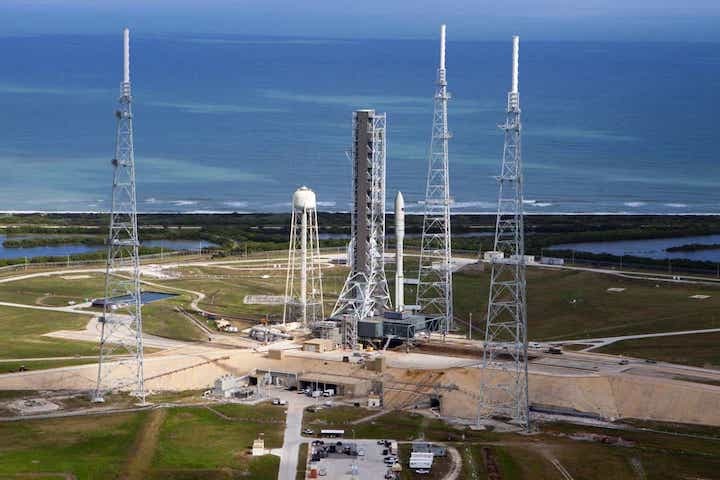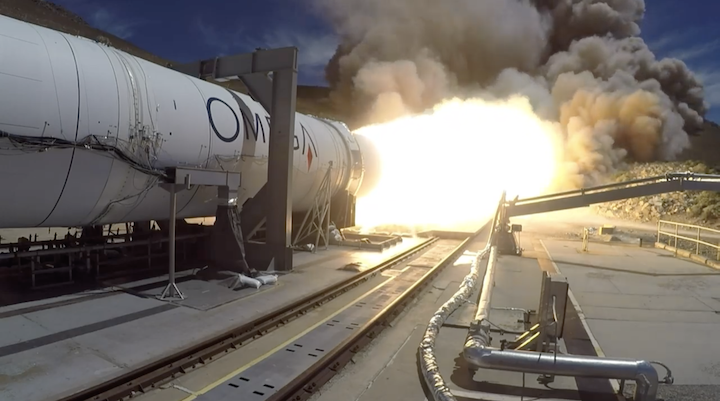20.02.2020

The competition between SpaceX and Boeing to send astronauts to the International Space Station isn’t the only space race these days.
Four companies – Northrop Grumman, United Launch Alliance, Blue Origin and SpaceX – are all competing to win a massive contract to provide launch services to the Air Force for five years starting in 2022 that utilizes a new rocket engine and rocket that ends America’s reliance on the Russian engine, the RD-180.
Only two companies will be chosen.
Sound familiar? The race mirrors NASA’s Commercial Crew Program to send Americans to the space station from U.S. soil and end our reliance on Russia’s Soyuz spacecraft.

Northrop Grumman’s contender is the OmegA rocket powered by a combination of its own solid rocket motors and Aerojet Rocketdyne's RL10 engine. The company is firing up the motor on the second stage for a full-scale, full-duration static fire test scheduled for February 27 in Promontory, Utah.
The test comes nine months after an engine nozzle broke apart during a test fire of the rocket's first stage.
Northrop Grumman says the issue was a result of designing a nozzle for space but testing it in the high desert of Utah.
The problem was that the atmospheric pressure on Earth prevented the nozzle from acting the way it would in the vacuum of space, explained Kent Rominger, former astronaut and VP of Strategic Programs at Northrop Grumman.
“The nozzle way over expanded and the flow separation caused the buckling phenomenon which caused the nozzle to break.”
The company says the nozzle would have worked in space.
Since then the company has beefed up the nozzles on both the first and second stage.
“In the end we decided to reinforce it, it adds a little bit more weight but it’s a really high performance nozzle.”
Northrop Grumman expects the second stage test fire to go smoothly. The engine will fire for 2 minutes and 17 seconds of burn time and they expect to see around 900,000 pounds of thrust. Unlike the test of the first stage, this test will not be live-streamed.
Once the motor is qualified, "we feel like we've got a boost solution that's a domestic alternative to the RD-180 engine" Jennifer Bowman, a company spokesperson said.
If all goes well, this will keep Omega on track to conduct its first certification launch from Pad 39B at Kennedy Space Center in just over a year.
Northrop Grumman is confident that even if the Air Force doesn’t select their rocket it can compete in a commercial market. But for now they are focused on securing that contract.
“We’re the only one in the competition that’s a large diversified operation, committed to national security space,” Rominger said.
In a not-so-subtle jab to their competition, Rominger continued “We’re committed to the mission. We’re not about going to Mars. We’re not about putting hundreds of thousands of people into space. You can count on us. Our CEO, if she retires or goes away or something happens to her, there’s multiple people in line. We will stay the course. So we believe that makes us unique.”
Blue Origin's contender is The New Glenn rocket with its BE-4 engine, early versions of which have been test fired.
ULA is building its new heavy lift Vulcan Centaur rocket which will also use Blue's BE-4 (ULA and Blue Origin are competitors and simultaneously partners).
SpaceX is in the running with its Falcon Heavy and Falcon 9 rockets powered by Merlin engines, which are already operational and have flown successfully to space.
The Air Force is expected to announce the two winners in June.
Quelle: Florida Today
